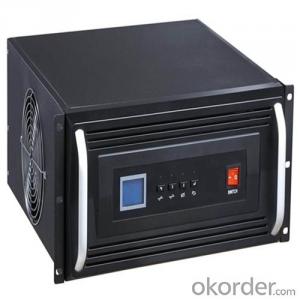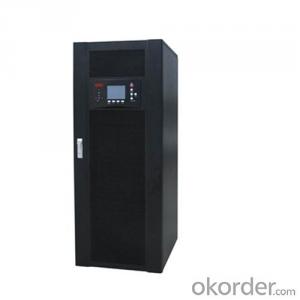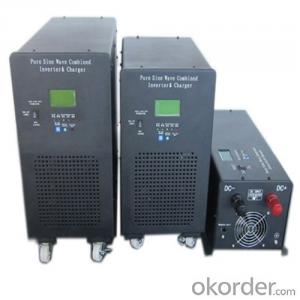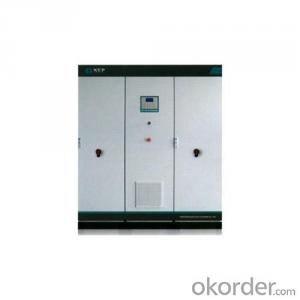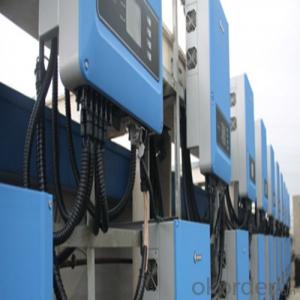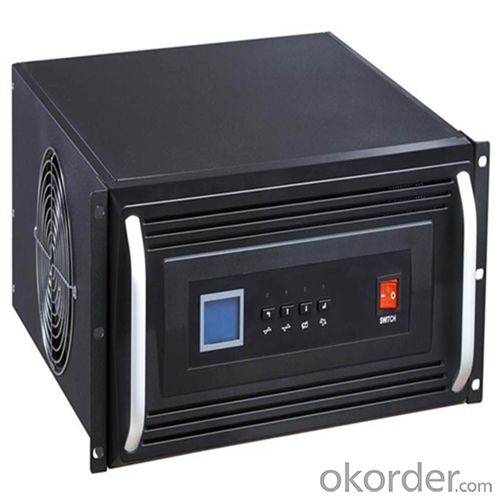Solar Inverter Png - Approved Solar Power Inverter Solar Charger 3000W 24V Pure Sine Wave
- Loading Port:
- Shanghai
- Payment Terms:
- TT OR LC
- Min Order Qty:
- 3 pc
- Supply Capability:
- 3000 pc/month
OKorder Service Pledge
OKorder Financial Service
You Might Also Like
Performance Characteristics
· 1. Suitable for all electrical equipments
· 2. Large LCD display for more detailed content
· 3. CPU controlled; fast transfer time
· 4. Intelligent battery management, prolonging the service life of the battery
· 5. Complete protection function, high reliability
· 6. Can provide high current charge
· 7. Can match different types of batteries
· 8. Disassembled LCD box which can make the operation in a distance of 15 meters
Product introduction
EP series is sine wave low frequency inverter, which is specifically designed for home appliances. It is equipped with a big LCD screen so all information is displayed in detail, which makes it more convenient to use. Charging current of the inverter is adjustable from 5A to 45A and you can also select different charging voltage to charge different types of batteries so batteries are under great protection.
Our Service
Samples
Samples are Available for Testing and Market Test.
Warranty
We provides warranty against defects in materials and workmanship for its Uninterruptible power supply, Power inverter/chargers including inverter12v 24v 48V, Solar charge controllers (“Product”).
OEM Service
OEM service is strictly based on the ISO9001 ISO14001 quality assurance system. The TOP involves the effective teamwork of departments from Sales, R&D, and Engineering, purchasing, production & QA, assuring a high quality product and prompt delivery for customers. The standardization of our quality system and the quality stability has earned us the trust of our customers for 12 years.
We have 10 sets of automatic insertion equipments, ICT PCB testing equipments, ATE automatic testing center and aging workshop for all products. Monthly output of UPS series exceeds 200,000. We have been offering OEM service for over 12 years.
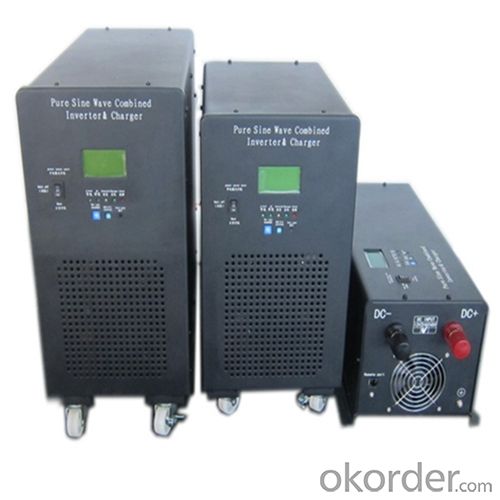
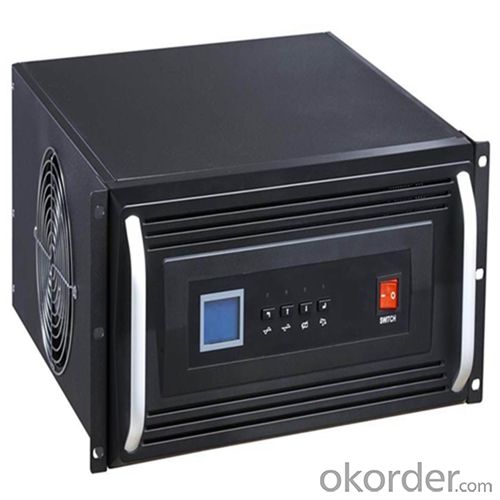
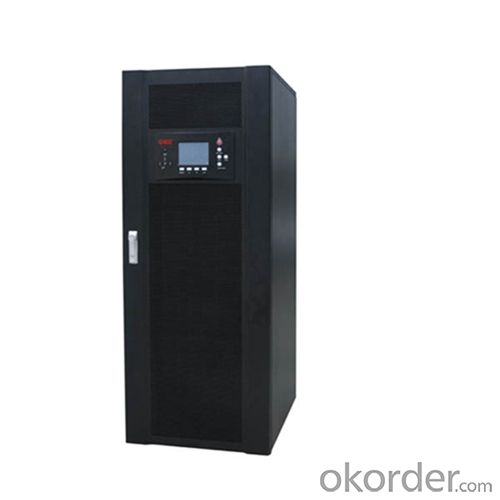
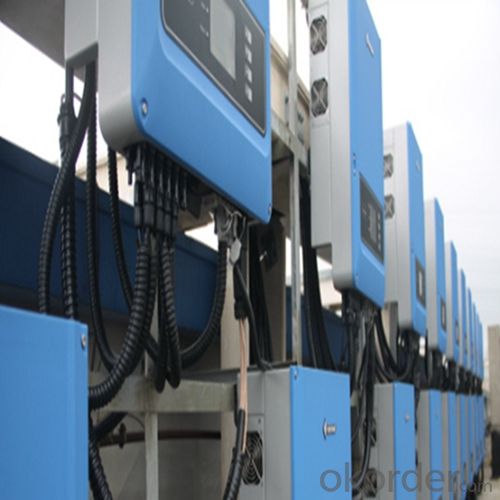
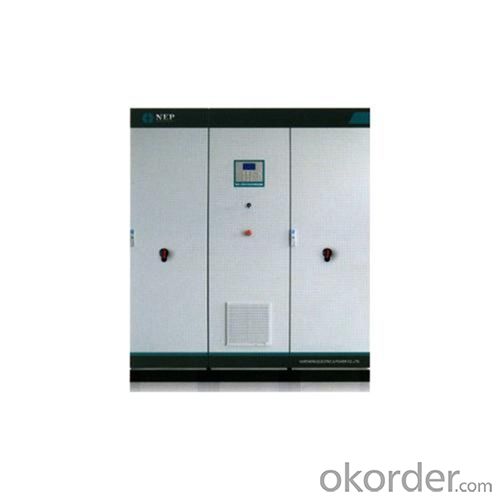
Specifications
Input | |
Input Voltage Range | 182-265VAC |
Output | |
Input Voltage Range | Batt.Mode:50±0.3Hz Mode:48-54Hz(50Hz) or 58-64Hz,Same as AC |
Output Wave Form | Sine Wave (Batt,mode) |
Transfer Time | 10ms(Typical) |
FAQ:
Q: Do you have the CE, TUV, UL Certification?
A: We’ve already passed all the tests, and any certificate is available.
Q: Have you ever sold your products to companies in my country?
A: Of course, we have customers in all general PV markets, but I think we should expand our market share along with the market growth.
Q: When did your company set up? You are a new company, how can I believe your quality?
A: We entered into Solar PV industry in 2005, now we have several plants in manufacturing of a-Si and c-Si panels, and our capacity is 220MW per year. Till now we have already passed all the tests by authorized laboratories, e.g. TUV, CE, UL.
Q: Can you help us install the module if we cooperate with you?
A: We haven’t entered into installation sector, but we have the plan in near future.
Q: How do you pack your products?
A: We have rich experience on how to pack the panels to make sure the safety on shipment when it arrives at the destination.
Q: Can you do OEM for us?
A: Yes, we can.
Q: Can we visit your factory?
A: Surely, I will arrange the trip basing on your business schedule.
- Q: Can a solar inverter be used with a solar-powered swimming pool heater?
- Yes, a solar inverter can be used with a solar-powered swimming pool heater. The solar inverter is responsible for converting the DC (direct current) electricity produced by the solar panels into AC (alternating current) electricity that can be used to power the swimming pool heater.
- Q: How does a solar inverter handle voltage and frequency variations caused by sudden load changes?
- A solar inverter is designed to handle voltage and frequency variations caused by sudden load changes in an efficient and reliable manner. When sudden load changes occur, the solar inverter employs various control mechanisms to regulate and stabilize the voltage and frequency output. Firstly, the inverter continuously monitors the voltage and frequency of the incoming solar power. If there are any variations due to sudden load changes, the inverter adjusts its internal control systems accordingly. It uses advanced power electronics and control algorithms to maintain the voltage and frequency within the desired range. To handle voltage variations caused by sudden load changes, the solar inverter employs a technique called voltage regulation. It automatically adjusts the output voltage by either boosting or reducing it as needed. This ensures that the inverter provides a stable and consistent voltage supply to the load, preventing any damage or malfunction. Similarly, to handle frequency variations caused by sudden load changes, the solar inverter employs a technique called frequency regulation. It adjusts the output frequency to match the grid frequency or the specified frequency requirements. By maintaining the desired frequency, the inverter ensures compatibility and synchronization with the grid or other connected devices. In addition to voltage and frequency regulation, solar inverters also have protective features to handle sudden load changes. They have built-in overload protection mechanisms that can detect excessive loads and prevent any damage to the inverter or the connected devices. These protective features can include overcurrent protection, short-circuit protection, and temperature monitoring. Overall, a solar inverter is designed to handle voltage and frequency variations caused by sudden load changes through its voltage and frequency regulation capabilities, as well as its protective features. These technologies ensure stable and reliable operation, allowing the inverter to efficiently adapt to changing load conditions while maintaining the integrity of the power supply.
- Q: What is the role of a transformer in a solar inverter?
- The role of a transformer in a solar inverter is to convert the direct current (DC) electricity generated by the solar panels into alternating current (AC) electricity suitable for use in homes and businesses. The transformer helps to step up or step down the voltage levels, ensuring efficient and safe transmission of electricity from the solar panels to the electrical grid or connected loads.
- Q: How does a solar inverter handle frequency variations?
- A solar inverter handles frequency variations by continuously monitoring the grid frequency and adjusting its own output frequency accordingly. It maintains a stable and synchronized frequency by using advanced control algorithms and power electronics to ensure that the electricity generated by the solar panels matches the frequency of the utility grid. This allows the inverter to seamlessly integrate renewable energy into the existing power system without causing disruptions or damage.
- Q: What is the role of a solar inverter in grid management and stability?
- The role of a solar inverter in grid management and stability is crucial in integrating solar power into the existing electrical grid system. Solar inverters are responsible for converting the direct current (DC) electricity generated by solar panels into alternating current (AC) electricity that can be used by homes and businesses or fed back into the grid. In terms of grid management, solar inverters play a vital role in maintaining the stability and reliability of the electrical grid. They provide grid support functions such as voltage regulation, frequency control, and reactive power compensation. By monitoring the grid conditions and adjusting the output of solar power accordingly, inverters help to balance the supply and demand of electricity in real-time, ensuring grid stability. Solar inverters also contribute to grid stability by improving power quality. They actively filter out harmonics, voltage fluctuations, and other electrical disturbances that can be caused by the intermittent nature of solar power generation. This ensures that the electricity generated by solar panels is of high quality and does not introduce any disruptions or damage to the electrical grid. Furthermore, solar inverters enable the seamless integration of solar power into the grid, allowing excess energy to be fed back into the system. This is known as net metering or feed-in tariff programs, where solar energy producers can receive compensation for the surplus electricity they produce. With the help of inverters, the generated solar energy can be efficiently transferred to the grid, reducing the reliance on traditional fossil fuel-based power generation and promoting renewable energy integration. Overall, the role of a solar inverter in grid management and stability is to ensure the smooth integration and optimal utilization of solar power, while maintaining the stability, reliability, and quality of the electrical grid. It acts as a bridge between solar energy producers and the grid, facilitating the efficient and sustainable integration of renewable energy sources into the existing power infrastructure.
- Q: Can a solar inverter be used in a hybrid solar system?
- Yes, a solar inverter can be used in a hybrid solar system. A hybrid solar system combines solar power with other sources of energy, such as batteries or a backup generator. The solar inverter is responsible for converting the DC electricity generated by the solar panels into AC electricity that can be used to power appliances and other electrical devices. In a hybrid system, the solar inverter works in conjunction with other components, such as a battery inverter or a grid tie inverter, to manage the flow of electricity between the solar panels, batteries, and the electrical grid.
- Q: How long do solar inverters typically last?
- Solar inverters typically have a lifespan of around 10 to 15 years. However, the actual longevity can vary depending on factors such as the quality of the inverter, maintenance, and environmental conditions.
- Q: PV grid-connected inverter and independent inverter in the control of what is the difference
- Photovoltaic grid-connected inverter is the assembly of the DC into AC power for the use of load, or do not use the load, the inverter after the AC power to the city power grid, when the electricity outage, the inverter will automatically
- Q: What is the maximum output voltage of a solar inverter?
- The maximum output voltage of a solar inverter depends on various factors such as the inverter model, design, and specifications. However, in general, the maximum output voltage of a solar inverter is typically around 230-240 volts for residential or commercial applications.
- Q: How does a solar inverter affect the value of a property?
- A solar inverter can positively affect the value of a property by increasing its desirability and potential energy savings. It allows for the conversion of solar energy into usable electricity, reducing reliance on the grid and potentially lowering energy bills. Additionally, having a solar inverter in place can demonstrate a commitment to sustainability and environmental consciousness, which may be appealing to potential buyers and increase the property's overall value.
Send your message to us
Solar Inverter Png - Approved Solar Power Inverter Solar Charger 3000W 24V Pure Sine Wave
- Loading Port:
- Shanghai
- Payment Terms:
- TT OR LC
- Min Order Qty:
- 3 pc
- Supply Capability:
- 3000 pc/month
OKorder Service Pledge
OKorder Financial Service
Similar products
Hot products
Hot Searches
Related keywords
